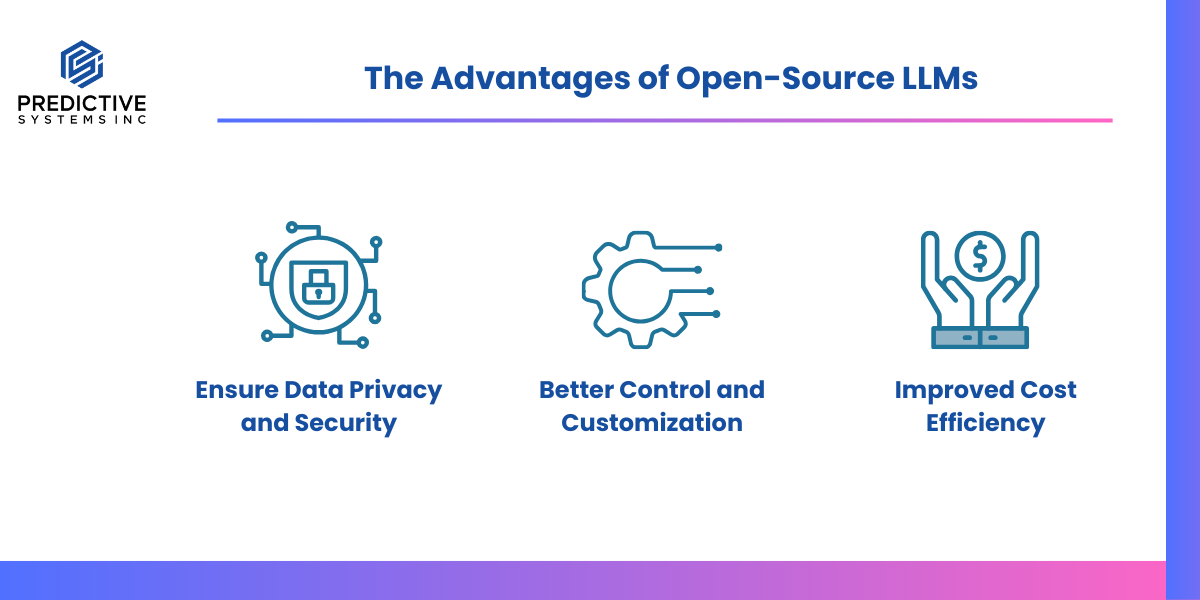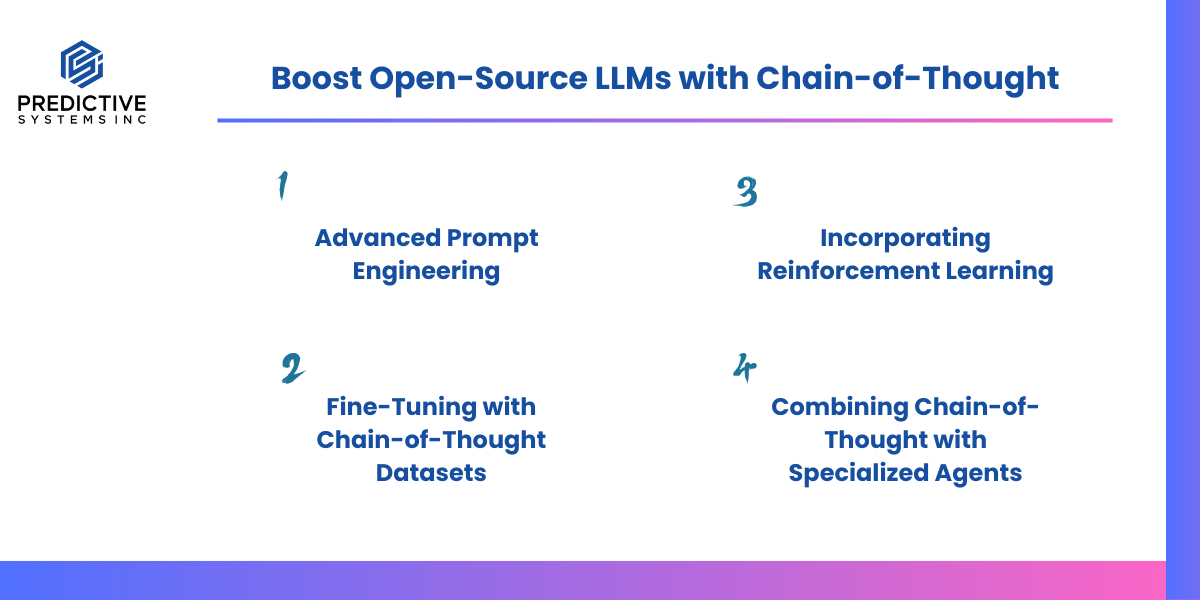Harnessing the power of an AI model that thinks aloud, providing detailed reasoning similar to OpenAI’s o1 model—all within your local infrastructure. With chain-of-thought techniques, it’s not just possible; it’s practical and within reach.
Artificial Intelligence continues to revolutionize the business landscape, offering unprecedented growth, efficiency, and competitive advantages. OpenAI’s o1-preview model has set new benchmarks in advanced reasoning and problem-solving. However, leveraging such cutting-edge models isn’t always feasible due to concerns over cost, data privacy, or the need for customization.
Here’s the exciting part: You can enhance your local, open-source Large Language Models (LLMs) to perform sophisticated reasoning using chain-of-thought techniques, effectively bridging the gap with models like OpenAI’s o1-preview.
The Advantages of Open-Source LLMs
Open-source LLMs such as LLaMA and Mistral offer businesses the ability to:
- Ensure Data Privacy and Security: With a local LLM, all customer interactions and data remain within your organization’s infrastructure. This is crucial for industries dealing with sensitive information, such as healthcare or finance, where compliance with regulations like GDPR or HIPAA is mandatory. Using OpenAI’s services involves sending data to external servers, which could pose security risks and complicate compliance efforts.
- Better Control and Customization: Local models can be fine-tuned to understand your specific products, services, and brand voice. This means the AI can handle customer queries with a level of personalization that external models may not offer. OpenAI’s models are generalized and may not capture the nuances of your business, leading to less satisfactory customer interactions.
- Improved Cost Efficiency: While OpenAI charges per API call, which can add up with high volumes, a local LLM has a more predictable cost structure. Once set up, it can handle unlimited queries without incurring additional fees, making it more cost-effective in the long run.
Understanding Chain-of-Thought Reasoning
Chain-of-thought reasoning allows AI models to process information in a step-by-step manner, emulating human-like problem-solving strategies. Instead of jumping to conclusions, the model articulates each reasoning step, leading to more accurate and insightful responses. This concept was first introduced in a groundbreaking paper by Google, which demonstrated how detailed reasoning steps significantly improve a model’s problem-solving abilities.
Enhancing Open-Source LLMs with Chain-of-Thought
So, how do you elevate your local LLM to rival the capabilities of OpenAI’s o1-preview model?
1.Advanced Prompt Engineering
Crafting prompts that encourage detailed reasoning can significantly enhance the model’s outputs. Use prompts like “Break down the solution step-by-step…” or “Explain your reasoning in detail…”. Provide sample answers that demonstrate the desired level of detail and reasoning.
2. Incorporating Reinforcement Learning
Applying Reinforcement Learning from Human Feedback (RLHF) can further align the model’s reasoning with human expectations. Collect evaluations from human reviewers on the model’s outputs. Then, use this feedback to iteratively refine the model’s performance in chain-of-thought reasoning.
3. Combining Chain-of-Thought with Specialized Agents
Beyond just step-by-step reasoning, chain-of-thought can be combined with multiple specialized agents that collaborate to brainstorm, observe, review, and iterate ideas. These agents can focus on specific tasks, such as data analysis, language translation, or strategic planning, working together to produce comprehensive and refined outputs.
Some useful patterns using agents are designed in our Design Pattern blog.
4. Fine-Tuning with Chain-of-Thought Datasets
Training your model on datasets that include detailed reasoning steps enables it to develop deeper analytical capabilities. Begin by assembling or creating datasets where each problem is solved through explicit reasoning, providing clear examples of step-by-step solutions. Then, utilize machine learning frameworks to fine-tune your model with this data, effectively teaching it the chain-of-thought methodology.
It’s important to continuously test the model’s performance and refine the training process accordingly, ensuring that it evolves and improves over time.
Transform Your AI Capabilities Today
Are you ready to empower your business with AI that not only provides answers but also mirrors the advanced reasoning of top-tier models like OpenAI’s o1-preview? Begin your journey with chain-of-thought techniques and elevate your local AI models to new heights.
Unlock the full potential of AI for your business—start enhancing your models today. Contact Us to learn how.




